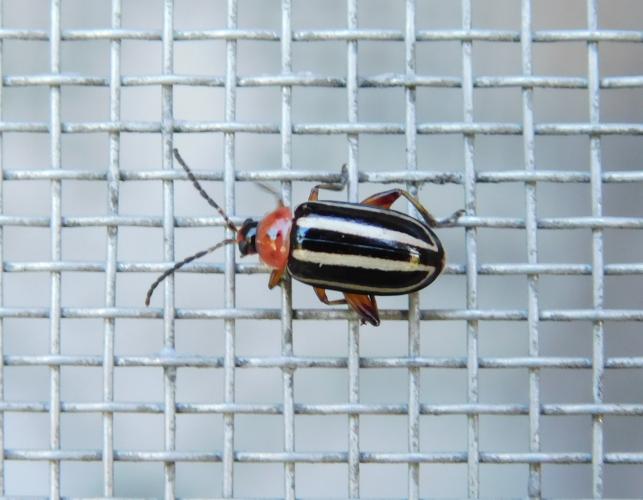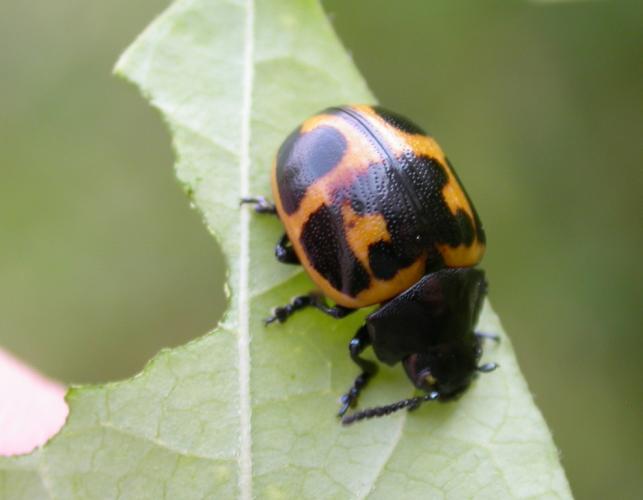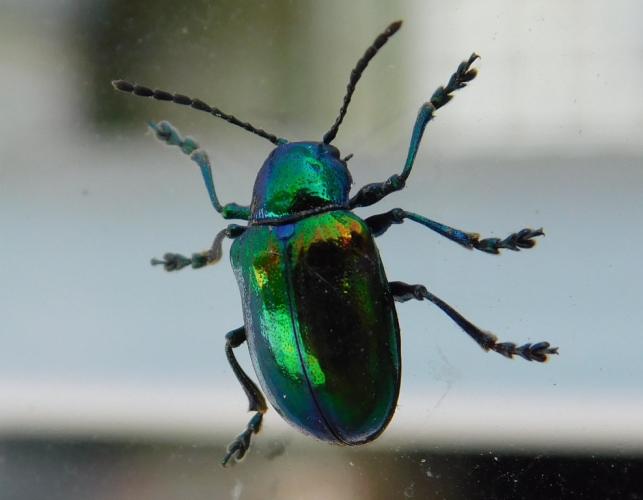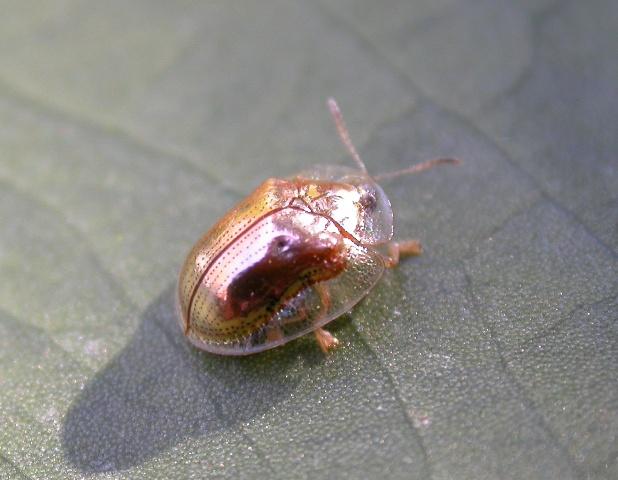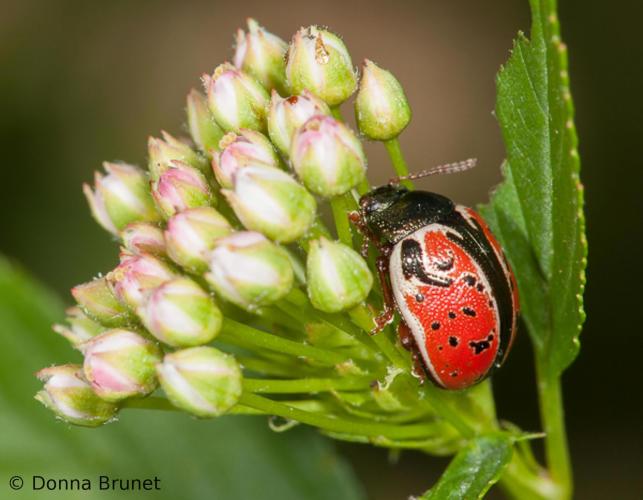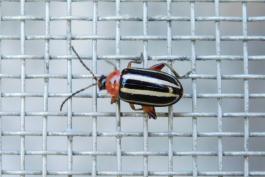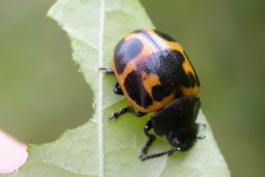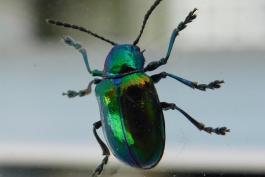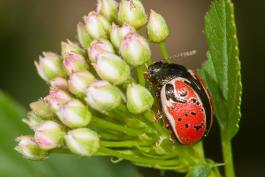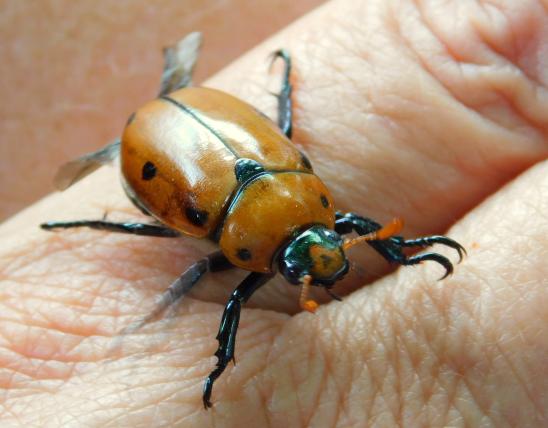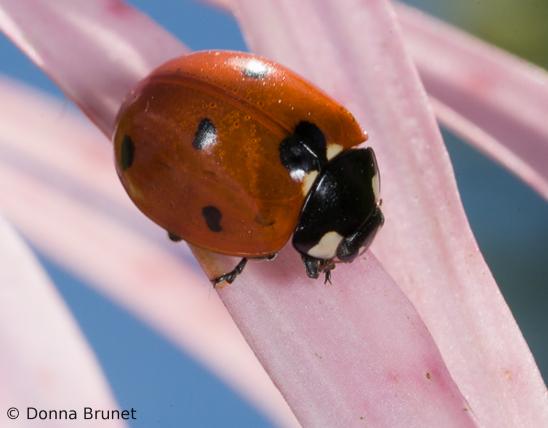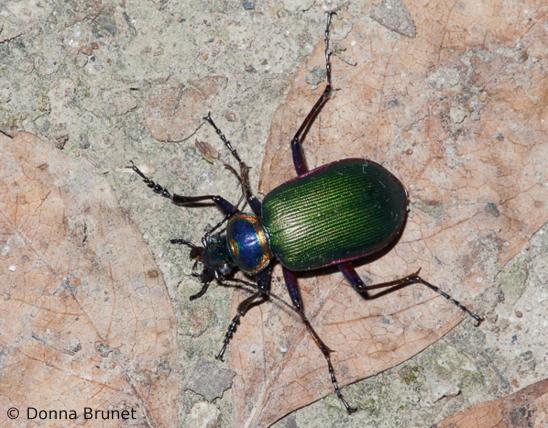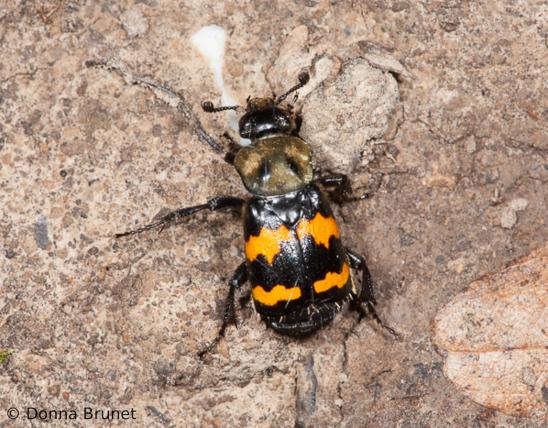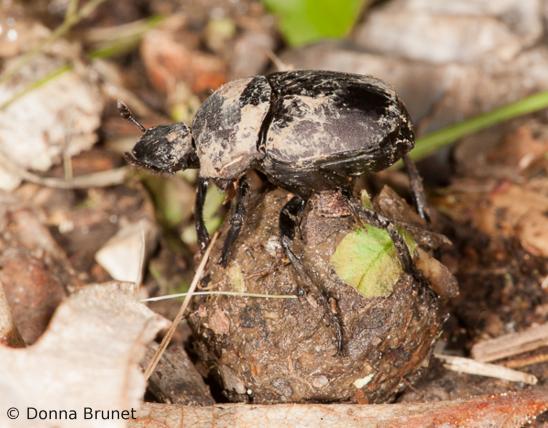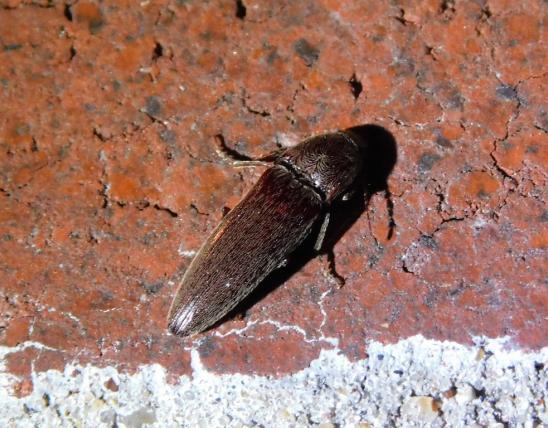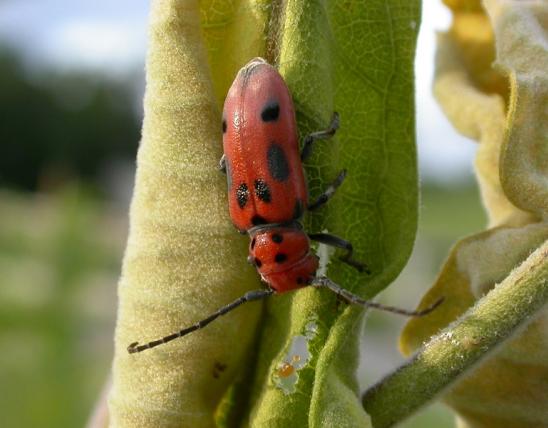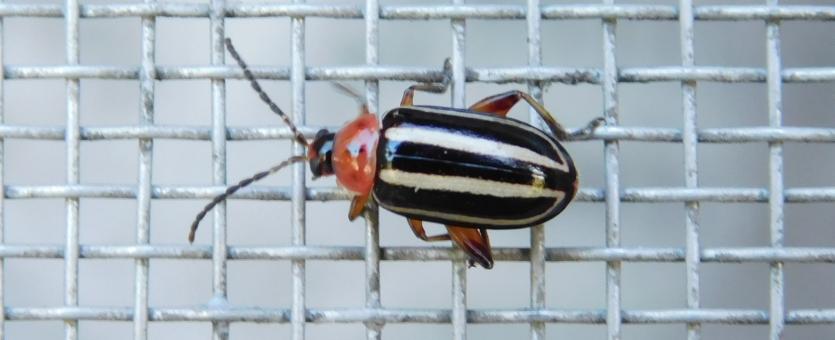
Like other beetles, leaf beetles have shell-like wing covers (elytra) that meet in a straight line over their abdomen. Leaf beetles are a large and diverse group. They are oval or round. Antennae are usually no more than half the length of the body. The eyes lack notches. Although some are drab browns and blacks, many are brightly colored with striped, spotted, or blotched patterns, and some are shiny gold, silver, or other metallic colors.
The larvae are segmented worms or grubs, with an amazing variety of forms. Some, like the Colorado potato beetle larva, are pudgy grubs. Others, like the larvae of tortoise beetles, have spines or hide beneath a roof made of excrement or other debris. Some have two “tails” at the hind end. Some look like early-stage butterfly caterpillars or lady beetle larvae.
Similar species: There is a mind-boggling array of beetle species, and chrysomelids are just one of the large families of beetles.
Length: to ¾ inch, though most are less than ½ inch (varies with species).
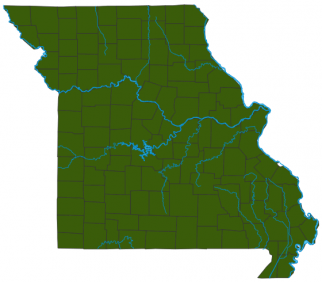
Statewide.
Habitat and Conservation
Leaf beetles — both adults and the larvae — are found on and near their particular food plants, among the leaves, stems, flowers, or roots they eat. The larvae of some are leaf miners, eating tunnels between the two surfaces of a leaf. Because adult leaf beetles can fly, they can go practically anywhere. Some species, seeking shelter in fall, enter houses through cracks and become annoying wintertime guests.
Food
The adults eat leaves, flowers, and other plant parts. Although some eat a variety of plants, many species are limited to one type, such as plants in the bean family, or to milkweeds, or cottonwood trees. The common names of the species usually give clues to the food plants. The larvae of leaf beetles eat foliage, roots, or underground stems of plants. The larvae of some species are leaf miners, chomping the soft tissues within leaves, creating a light-colored, meandering pattern.
Status
Common. Several species of this large beetle family are crop and garden pests. Among these are the bean leaf beetle, which attacks soybean leaves, pods, and seeds, plus the striped and spotted cucumber beetles, Colorado potato beetle, elm leaf beetle, corn rootworms, flea beetles of corn, potato, eggplant, cabbage, spinach, and more, tortoise beetles, and asparagus beetles. Some species, however, are a valuable biological control for invasive weeds.
Life Cycle
The life cycles of this large family of beetles are as diverse as the beetles themselves. Like other beetles, they all undergo a complete metamorphosis, which means they have four growth stages: egg, larva (caterpillar or grub), pupa, and adult. As the larvae grow, they shed their skin a number of times until they are large enough to pupate. The adult (beetle) stage is the life stage when they are sexually mature. This is basically the same process that butterflies, flies, and bees go through.
Human Connections
Although many species are crop and garden pests, causing serious economic damage, keep in mind that not all plants are beloved by people, and there are leaf beetles that limit their populations, too. One species was introduced to America to hinder an introduced St. John’s-wort that sickens cattle.
Ecosystem Connections
As herbivores, leaf beetles limit the growth of plants and transform plant nutrients into a form palatable to predators, which relish the beetles. Herbivorous insects pass plant-made nutrients up the food chain to animals that do not eat plants. Because of their preference for particular plants, some leaf beetles are used to control invasive weeds, thereby helping maintain natural ecosystems.
